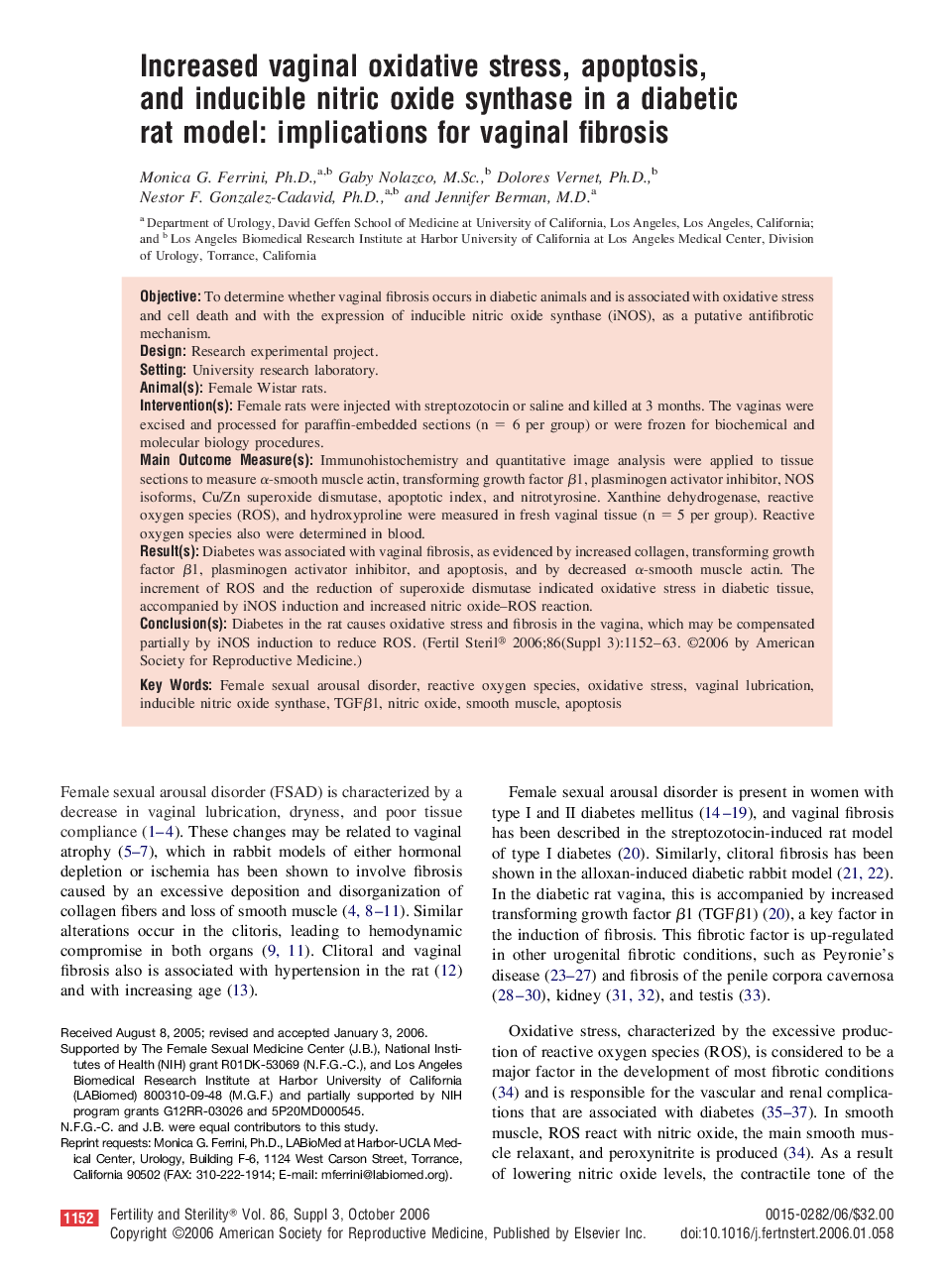| Article ID | Journal | Published Year | Pages | File Type |
|---|---|---|---|---|
| 3940787 | Fertility and Sterility | 2006 | 12 Pages |
ObjectiveTo determine whether vaginal fibrosis occurs in diabetic animals and is associated with oxidative stress and cell death and with the expression of inducible nitric oxide synthase (iNOS), as a putative antifibrotic mechanism.DesignResearch experimental project.SettingUniversity research laboratory.Animal(s)Female Wistar rats.Intervention(s)Female rats were injected with streptozotocin or saline and killed at 3 months. The vaginas were excised and processed for paraffin-embedded sections (n = 6 per group) or were frozen for biochemical and molecular biology procedures.Main Outcome Measure(s)Immunohistochemistry and quantitative image analysis were applied to tissue sections to measure α-smooth muscle actin, transforming growth factor β1, plasminogen activator inhibitor, NOS isoforms, Cu/Zn superoxide dismutase, apoptotic index, and nitrotyrosine. Xanthine dehydrogenase, reactive oxygen species (ROS), and hydroxyproline were measured in fresh vaginal tissue (n = 5 per group). Reactive oxygen species also were determined in blood.Result(s)Diabetes was associated with vaginal fibrosis, as evidenced by increased collagen, transforming growth factor β1, plasminogen activator inhibitor, and apoptosis, and by decreased α-smooth muscle actin. The increment of ROS and the reduction of superoxide dismutase indicated oxidative stress in diabetic tissue, accompanied by iNOS induction and increased nitric oxide–ROS reaction.Conclusion(s)Diabetes in the rat causes oxidative stress and fibrosis in the vagina, which may be compensated partially by iNOS induction to reduce ROS.
